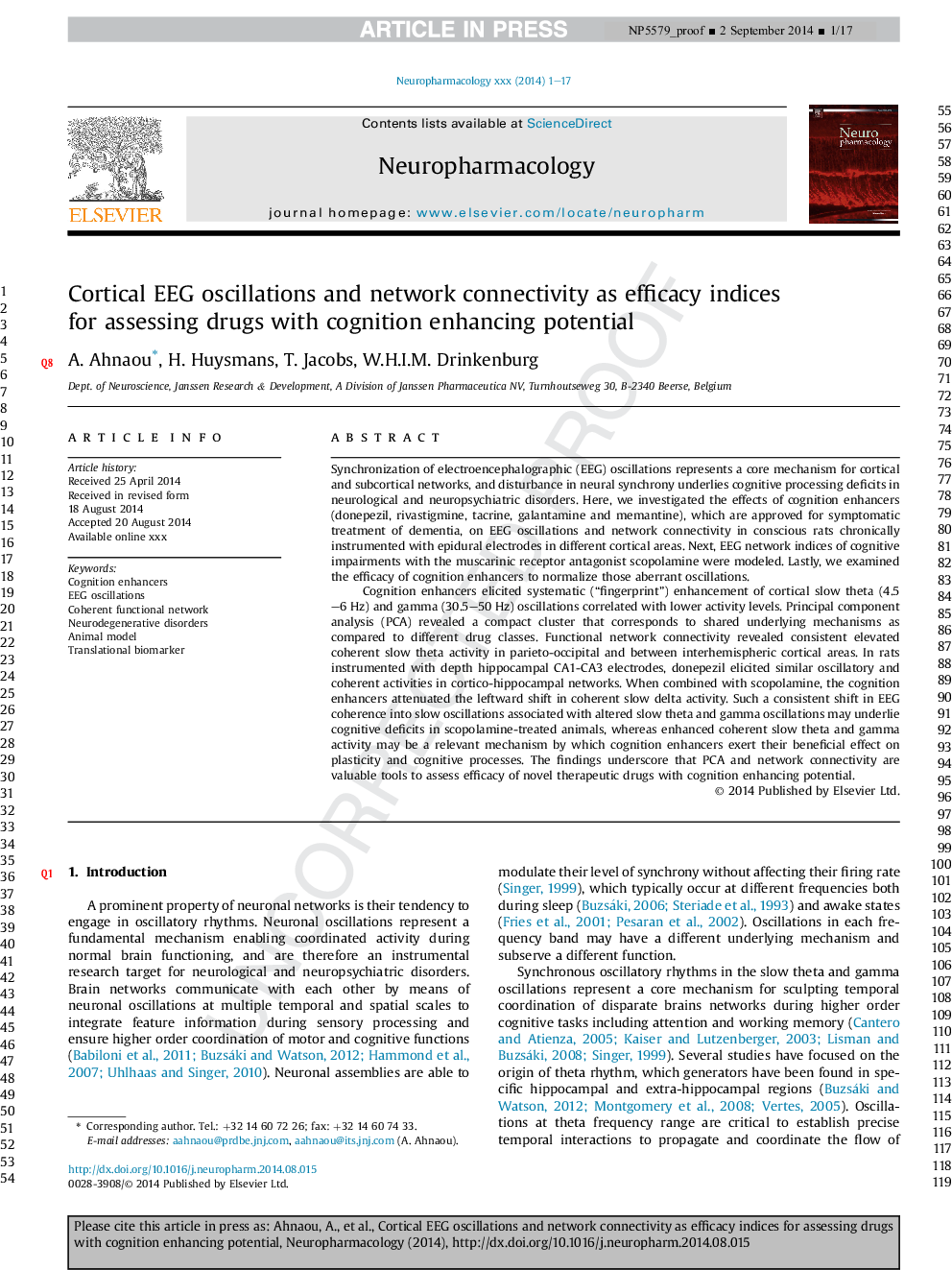| Article ID | Journal | Published Year | Pages | File Type |
|---|---|---|---|---|
| 5814233 | Neuropharmacology | 2014 | 17 Pages |
Abstract
Cognition enhancers elicited systematic (“fingerprint”) enhancement of cortical slow theta (4.5-6Â Hz) and gamma (30.5-50Â Hz) oscillations correlated with lower activity levels. Principal component analysis (PCA) revealed a compact cluster that corresponds to shared underlying mechanisms as compared to different drug classes. Functional network connectivity revealed consistent elevated coherent slow theta activity in parieto-occipital and between interhemispheric cortical areas. In rats instrumented with depth hippocampal CA1-CA3 electrodes, donepezil elicited similar oscillatory and coherent activities in cortico-hippocampal networks. When combined with scopolamine, the cognition enhancers attenuated the leftward shift in coherent slow delta activity. Such a consistent shift in EEG coherence into slow oscillations associated with altered slow theta and gamma oscillations may underlie cognitive deficits in scopolamine-treated animals, whereas enhanced coherent slow theta and gamma activity may be a relevant mechanism by which cognition enhancers exert their beneficial effect on plasticity and cognitive processes. The findings underscore that PCA and network connectivity are valuable tools to assess efficacy of novel therapeutic drugs with cognition enhancing potential.
Related Topics
Life Sciences
Neuroscience
Behavioral Neuroscience
Authors
A. Ahnaou, H. Huysmans, T. Jacobs, W.H.I.M. Drinkenburg,
